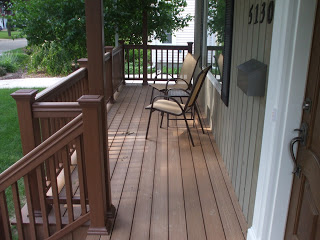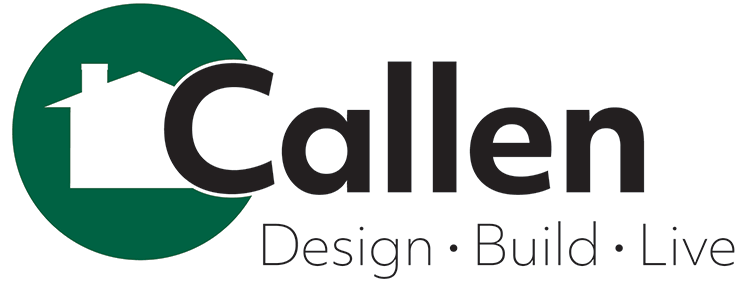by Tim Liegler
Decks are a wonderful extension of your indoor living space and can provide great enjoyment to your family and friends. The right deck design can also create a useful outdoor living space that offers you a lot of personalization options to suit your style.

Before considering a contractor, it’s good to have some ideas of what you want in a deck and how it is going to be used. Are you going to have a cooking area? Are you going to entertain on the deck? Are you going to having family meals on the deck? Are you considering a hot tub, a fire pit, or a fireplace? What other amenities do you want; lighting, a pergola, benches, flower boxes, a deck that is multi-tiered or curved? All of these questions will help you determine the footprint of the deck. The more things you add to a deck, such as curves, multiple colors, multiple directions, chevrons . . . all need to be taken into consideration for framing and support
Let’s talk about deck materials first. The most common deck material today is wood. The most common wood deck is made from treated southern yellow pine. This material is durable and long lasting, but requires cleaning and resealing on a periodic basis.
Additional wood decking materials you can select are redwood or cedar. Both materials are more attractive, a bit more costly, yet require the same periodic cleaning and resealing as southern yellow pine. Properly maintained all three wood deck materials will last a long time.
Another option for your deck is composite decking. This deck material can be made from either wood and plastic fibers or a cellular PVC material
Some common composite deck materials include Trex, TimberTech, and AZEK. All exterior building materials require cleaning. While composites provide less maintenance and more colors than wood, always look at the care and cleaning instructions from the manufacturer you choose, especially what they recommend for the more difficult stains that may occur on your deck.
Deck railing systems not only provide a safety element, required by building codes, but they also are a design element and provide an opportunity to personalize your deck.
There are many materials and styles to consider and each manufacturer has railings to complement their brand.
Some options include glass panels and cable rails, which preserve views without compromising safety. You can also use wrought iron or aluminum. Built-in planters also can be used instead of rails. They add some texture and color to the deck and using taller plants also adds a layer of privacy
Decks can also be gated as a safety factor if you have children or pets. Building code dictates any deck around a pool needs a gate and a rail.
Lighting is another way to make your deck stand out and allows you to use your deck beyond sunset. Low-voltage LEDs can be placed under rails, on steps, or flush into the decking. 
When Callen builds a deck, we use hidden fasteners instead of nails. The fasteners are screwed in on an angle, using a special jig. It’s visually appealing because you don’t see the screws on the top face of the deck. It’s a seamless, cleaner look.
Homeowners need to check their community’s regulations on what their deck needs to do to be compliant. In some cases, you have to submit plans or a plot survey, and some communities require submitting plans to an architectural review board. Decks attached to the house will always require a building permit. For free-standing decks, check with your local building inspector before proceeding.
Knowing codes, and knowing how to attach the deck, how to sink posts into ground, anchoring post piers, are all important aspects of correct deck construction. Having a professional advise you of your options and design and construct it for you is the best choice.



Leave a Reply